You might consider adding a request to your custom slave's functions to say "OK, I'm going to need a lot of current for a little while here", and add a MOSFET pullup to your output. Then, you could turn this off for a few cycles, and see if the slave is still allowing the line to be resistively pulled up (like on p.3 figure 2 of the DS18S20 datasheet.) A lot of 1-wire devices aren't really 1-wire. If you don't need to interact with actual 1-wire parts and/or you control the master node, you can define your own specs and this should make things much easier.
Your job is made easier because your micro can probably handle between the 5V of the bus and decay all the way to ~2.6. Therefore, the aforementioned Schottky and capacitor setup should work, or even a silicon diode. Consider the following diode setups:
- Silicon diode: This would be my first choice. As long as your micro and any peripherials can run at 4.3V, you will minimize your reverse current from tens to hundreds (and even up into mA when warm) on a Schottky down to tens of nano-amps
- Schottky diode: Use only if the .4V between the standard diode and Schottky is significant for your application, but reverse current on the order of 100uA is acceptable.
- Ideal diode: Try the LTC4411 or similar if cost is not an issue (Only $1.75, but more than a passive diode) and 20uA reverse current is acceptable.
Refer to the MSP430 datasheet for power consumption. At 3V (Using a Li-ion battery rather than a leaky supercap, assuming that you might want to remove this device but retain RAM for lower power code execution), you can have a 100na (nano-amp, .1uA) hibernate mode requiring an external interrupt (like a pin change!)
The other option is to be miserly in power requirements, and use a battery. See this app note from Maxim. If you can keep your MSP430 in sleep mode (i.e., only wake on a pin change, like a 1-wire initialization pulse), you can average less than 1uA and a coin cell will last you for ten years (In theory.) How long do you want the device to last?
